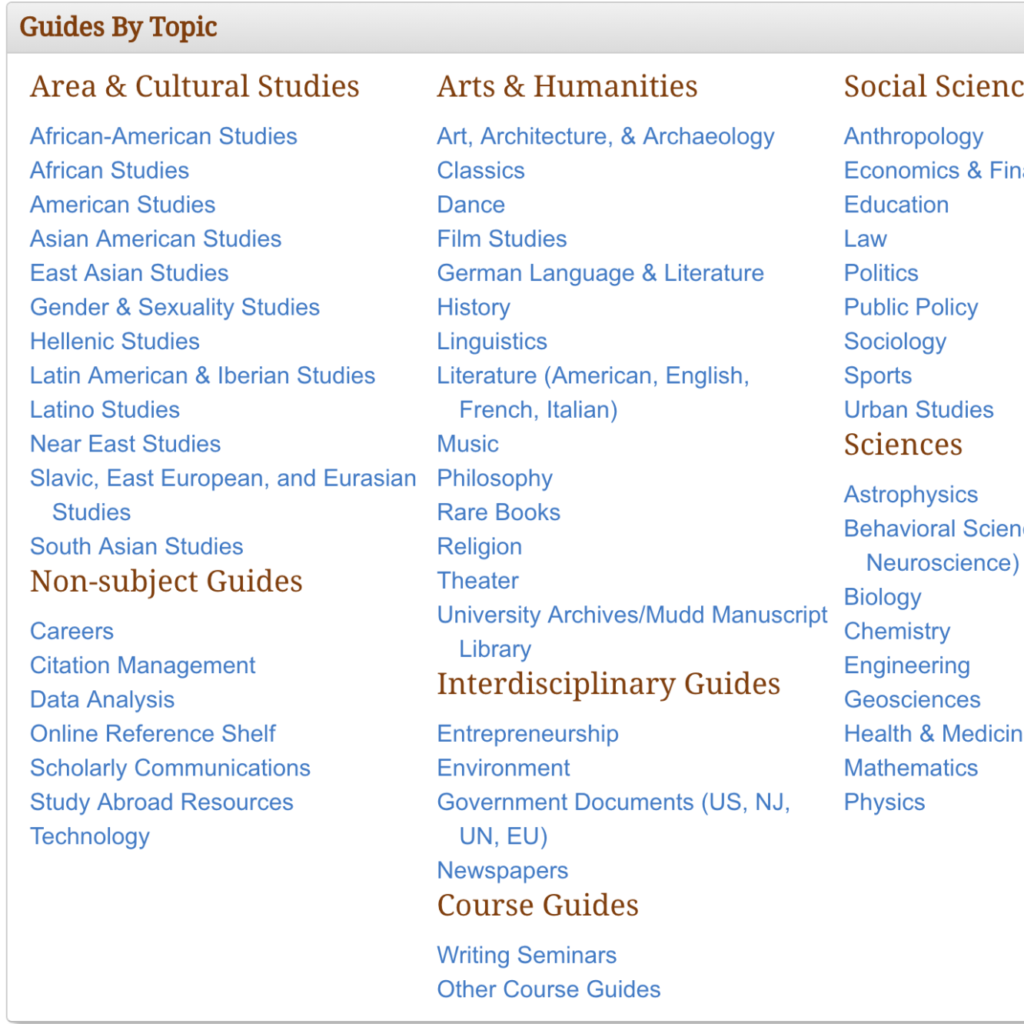I recently discovered yet another lifesaving research resource on campus: Library Guides. Compiled by Princeton’s subject librarians, these free online guides tell you everything you need to know about researching your field – and I mean everything. If you haven’t yet explored the available Library Guides, you don’t know what you’re missing.
Even after a few years at Princeton, the library system can feel overwhelming. Locating the relevant databases, citation formats, and reference books is always a challenge – especially at the start of a project.

This is where the Library Guides come in. Organized by academic discipline, the Guides list all of the research resources available to students for any given field. Each Guide is different, but you can typically expect to find: catalogs of relevant handbooks, manuals, and encyclopedias, useful databases and how to access them, citation information specific to your field, and so much more. The Guides also feature the relevant subject librarians and how to contact them for support.
This past month, I’ve relied on the History Library Guides to access the specific primary source databases I need for my JP. I’ve also used the Architecture Library Guides to locate the articles and drawings I need for my studio project this semester. In a sense, using the Guides is like meeting with your personal librarian when you need research help – if your personal librarian were available to you at any time of day or night.
And just in case you associate Library Guides with Writing Seminar, I will emphasize that they are so much more than introductory resources. They are designed for every level of campus research, from first-years to graduate students.
The first step is accessing the Library Guides website: you can either go directly to libguides.princeton.edu or use the main PUL website and select “Research Guides” under the “Research Tools” menu.
Next, you’ll select your field/s. There are Arts & Humanities Guides, Social Sciences guides, and Sciences Guides, as well as interdisciplinary Guides and non-subject Guides. Chances are there’s at least one guide – and probably multiple – designed for research in your field. The library even has Guides for study abroad resources and career searching.

At this point, I usually head straight to my home department’s page. From there, I can access the Library Guide designed specifically for my Junior Seminar, as well as everything else I could possibly need, like a senior thesis survival guide, instructions on downloading and using Zotero, and a detailed explanation on how to find and use images in my research. I could spend hours just reading all of the useful information on this one page.
But it can also helpful to explore other disciplines’ Guides – especially if your research topic spans multiple disciplines. Just this week I started exploring the Architecture Library Guides for my final research project in my Urban Studies studio course. Within minutes I found exactly what I needed through a database I didn’t even know existed!
I could go on forever about all of the amazing information in the Library Guides, but I don’t want to spoil the excitement of discovering their treasures on your own. I’ve written a few posts recently about hidden resources on campus, but the Library Guides are hands-down the most important Princeton research tool to know about.
–Rafi Lehmann, Social Sciences Correspondent

